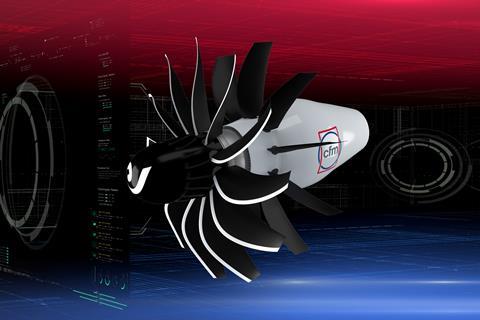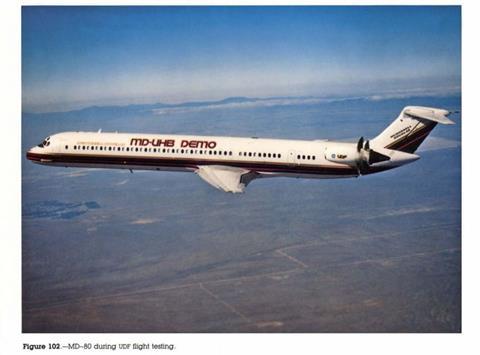GE Aerospace has started testing key components of its in-development open-fan engine, and executives still insist the fuel-efficient design will find its way on future narrowbody passenger jets.
“As we speak, we are running… ingestion testing to validate our fan-blade technology,” GE Aerospace vice-president of engineering Mohamed Ali said on 7 March.
“There is… ongoing windtunnel testing to optimise the installation of this configuration on the aircraft,” he added, speaking during parent company General Electric’s investor day in New York City.
That windtunnel testing, using a one-fifth-scale demonstrator, is taking place in France and is led by Safran, GE’s partner in the CFM International joint venture.

Working through CFM, GE and Safran are now several years into developing a open-fan engine for a future narrowbody jet.
The partners call the effort Revolutionary Innovation for Sustainable Engines (RISE), and say their open-fan engine will be 20% more efficient than the CFM Leap turbofans that power Boeing 737 Max and Airbus A320neo-family jets.
Neither Airbus nor Boeing have launched new narrowbody development programmes, let alone committed to a particular engine, though Boeing chief executive David Calhoun has said the 737’s replacement must be 15-20% more efficient.
Airbus has also indicated that it is planning for an A320neo successor to arrive in the second half of the 2030s.
“The future is going to be about RISE, and it will be our most-ambitious programme that we’ve had yet,” GE Aerospace Commercial Engines & Services chief executive Russell Stokes says.
CFM’s open-fan remains in the early development stages. The partners expect the design will be ready for service entry in the 2030s.
“We are doing real testing on real hardware and making real progress,” says Ali. The team have already developed a high-pressure turbine, which they put through a “full engine test”.
That test showed that the design will deliver “significant fuel-burn improvement” and be more durable.
The 20% efficiency goal “is practically impossible… without the open-fan”, says Ali, adding that a traditional turbofan could only be 20% more efficient if its core burned at “half the temperature of the sun’s surface”.
“There is no material on earth that can sustain that,” he says.
Open-fan engines are not new. GE Aviation itself developed and flight tested an open-fan powerplant in the 1980s. But falling fuel prices and technical challenges – including excessive noise – kept the architecture on the sidelines.
Ali insists the RISE team has already cracked the noise problem, saying “open-fan technology has the capability to achieve lower noise than today’s Leap”.


















































